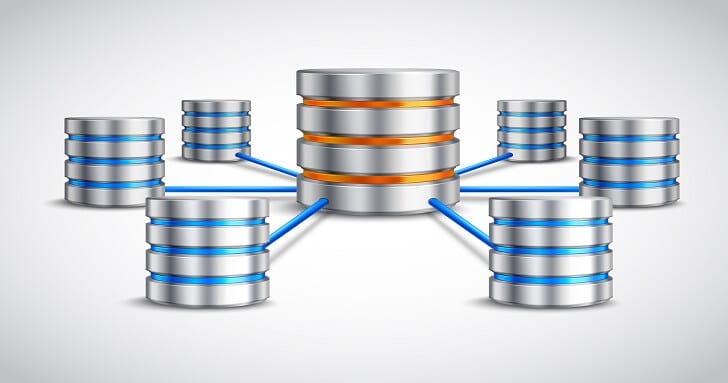In the modern competitive business environment, any company’s success is largely based upon its capability to effectively convert its data into insightful knowledge.
When the need is for analytics, it can bring new business insights that will help enterprises transform the way they do business. The data-based insights will allow the organization to make more informed decisions, predict the market trends, and improve customer engagement.
Organizations can achieve these goals only if they have a holistic approach to their database management. Unfortunately, most organizations have different types of data residing on different systems, which cannot talk to each other. What the companies ideally need is to effectively consolidate all these data from different sources and allow integration of new data.
The challenge of hybrid data
There are a couple of reasons why enterprise data live in separate systems. Team segregation is one primary reason, whereas each team in an organization may build its own independent system based on its unique objectives and requirement for data. Each team chooses a database system that specializes in handling their specific requirements and application tasks. In some cases, the priority may be for performance, and at some other times, the requirement may be for more flexibility and scalability.

At the first point, businesses have to introduce their unique data strategy in order to establish and ensure data singularity. This approach is for summarizing their information assets in totality and makes it a more competitive and strategic real-time DB. The key objective of this approach is to reduce any data movements in between various systems, especially during data processing for analysis purposes. Data movement or data replication is a fragile operation, which often requires significant support resources in order to run smoothly.
Hybrid databases for enterprise DBAs
A hybrid database is a very flexible data storage approach, which helps to store data of various types, including structured, unstructured, and semi-structured data together. A hybrid system can locate individual records and both transactional and analytical workloads simultaneously to run the queries at a scale. As we know, analytical queries may be more resource-intensive, and so the hybrid databases need to scale out linearly. The databases should also be highly available and should have remote replication capabilities in order to ensure that the data is always accessible. Remote administration services like RemoteDBA.com can ensure optimum security in remote data replication and management tasks.
Previously, many organizations used to consolidate their data in data warehouses. Data warehouses were ensuring the ability to access all the data stored and keep the systems optimized for long-running analytical queries. These tasks were strictly batch-oriented. However, today we have resulted in real-time with query response time is reduced to milliseconds.
While advanced solutions like Hadoop and Casandra entered the market, they started addressing the limitations in terms of scalability. But there had been some restrictions in terms of functionality. Hadoop also offered infinite linear scalability to store data, but there was no support for any SQL or other kinds of defined data structures. Casandra was a popular NoSQL option, which supported distributed documents for non-structured and semi-structured data, too but was not capable of doing analytics. Both of these required significant integration efforts in order to get some results which they are looking for.
Oracle also introduced a similar database appliance back in 2008, which was named Exadata. Oracle Exadata brought high-performance reference hardware, an engineered system, and some unique features in terms of query performance and data compression. In recent times, the vendors have also started more aggressively pushing the hybrid market, and the existing products started emerging by crossing the boundaries.
We can easily run MapReduce jobs in Hadoop-style on Casandra and SQL on Hadoop using Impala. The SQL server also introduced columnar storage format for analytical data and in memory or OLTP systems for transactional data. Oracle introduced many improvements to help their product line using In-Memory, a data warehouse with high-performance memory store for extreme analytical performance.
Choosing hybrid DB solutions
If you are planning to rearchitect the database infrastructure and choose another platform for migrating all data, this can be an expensive and complicated affair. In order to make some informed decisions, you have to first start with your end objectives in mind. For this, you have to explore what type of data you need to handle and also to be sure about some sort of a scalable solution in order to meet your growing needs.
When it comes to data storage and usage of data for transactional and analytical purposes, the organization’s requirements may keep on growing and changing widely as the business grows. Along with ensuring flexibility and scalability, it is also important to ensure security and accessibility along with interoperability with existing systems. Here, the fundamental design principle is to reduce the data transit and keep the architecture simple. Say, for example, a solution that relies largely on Hadoop power can perform the analytics on another database engine. However, the performance may not be optimal as there may be large amounts of data to be copied between two different systems during the execution of a query. This may be an insufficient and task-intensive process, which may not be ideal for modern-day data stores.
Wrapping things up
So, we have seen that the hybrid database solutions can better handle unified storage of data and usage of it for analytical purposes. However, while doing this, you need to be very careful about choosing the appropriate platforms and tools based on the nature of your data and as well as your transactional and analytical needs to fulfill. All the platforms mentioned above and tools are proven to be successful in trying out the hybrid models; however, as we discussed, you need to check the compliance of these systems with your existing database and analytical applications. It is advised to spend some time and effort in terms of doing intensive research and identify which are the ideal platforms to serve your purpose well.

